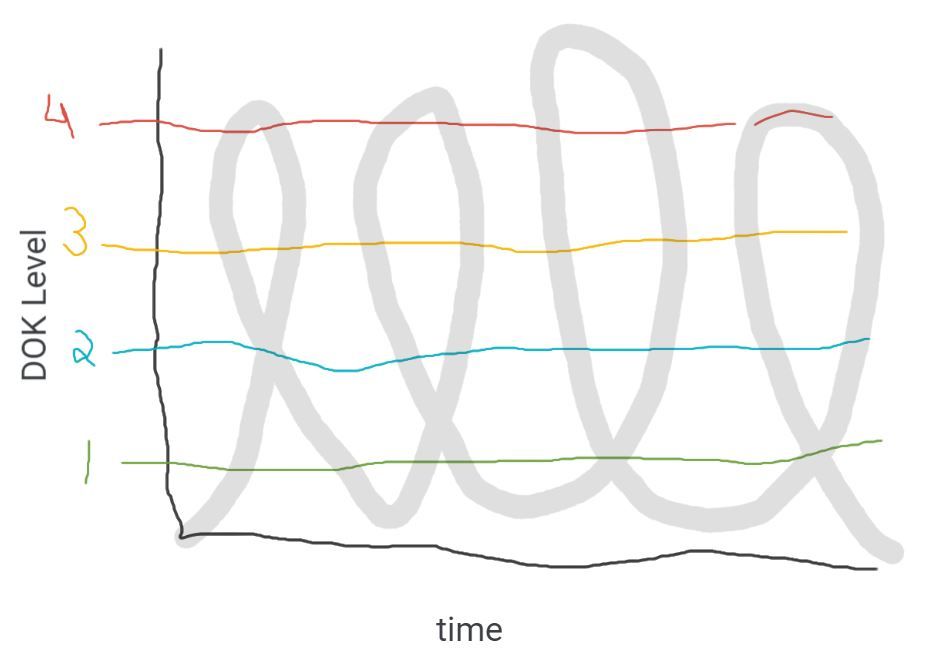
I drew this picture earlier this semester but feel it is appropriate to discuss in this challenge. Providing various opportunities for students to engage at each (or as many as possible) level of cognitive rigor is one practical consideration for differentiated learning. More specifically, this might include modeling (examples & non-examples), scaffolding, repetition, sufficient practice time, small-groups, peer-led instruction, etc. Providing multiple points of engagement at each cognitive level considers that some students might not understand the content at the same rate as others. In a more traditional linear progression, students who didn't quite understand something at a DOK level 1 might be left behind and more disengaged later on when asked to apply what they have learned by accessing a higher cognitive level. Whereas in the model represented in the image, students who didn't quite understand something will have another opportunity to re-engage and develop that understanding multiple times and are more likely to experience meaningful learning as a result.
Additionally, students who might have a solid understanding of the content before the lesson are engaged more often in this model than a traditional linear approach. In the linear process, students might be disengaged until the class progresses to higher cognitive levels. But in the image above, these students are engaged earlier and more often in the lesson, likely leading to more meaningful learning.